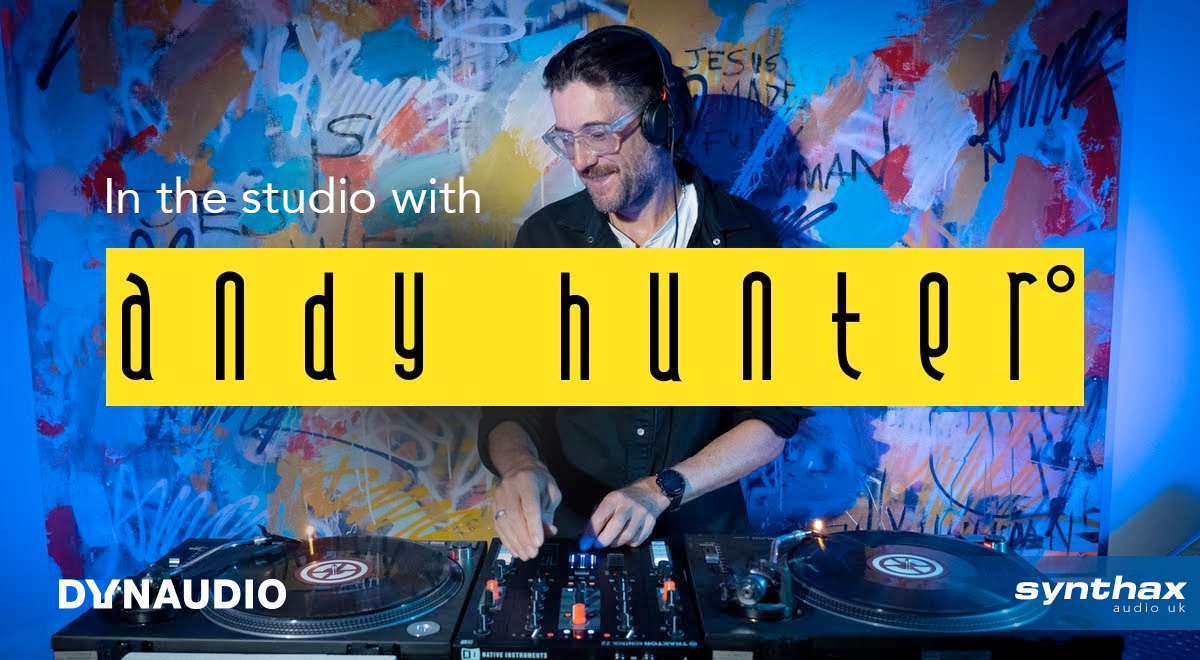
DJ and Producer Andy Hunter° on the Dynaudio Core Series
Andy Hunter is a renowned DJ and electronic music producer from Leicester, UK. Known professionally as Andy Hunter°, Andy began his career as part of the vibrant Bristol drum and bass scene in the 1990s, going on to release a steady stream of music on both major labels and as an independent artist, as well as scoring film sound tracks alongside his writing partner Robbie Bronnimann.
We sat down with Andy for a chat about his dynamic career – from touring alongside Tiësto and DJing with Grandmaster Flash; transitioning from a major label to releasing as an independent artist; and why he’s upgraded to the Dynaudio Core Series of studio monitors.
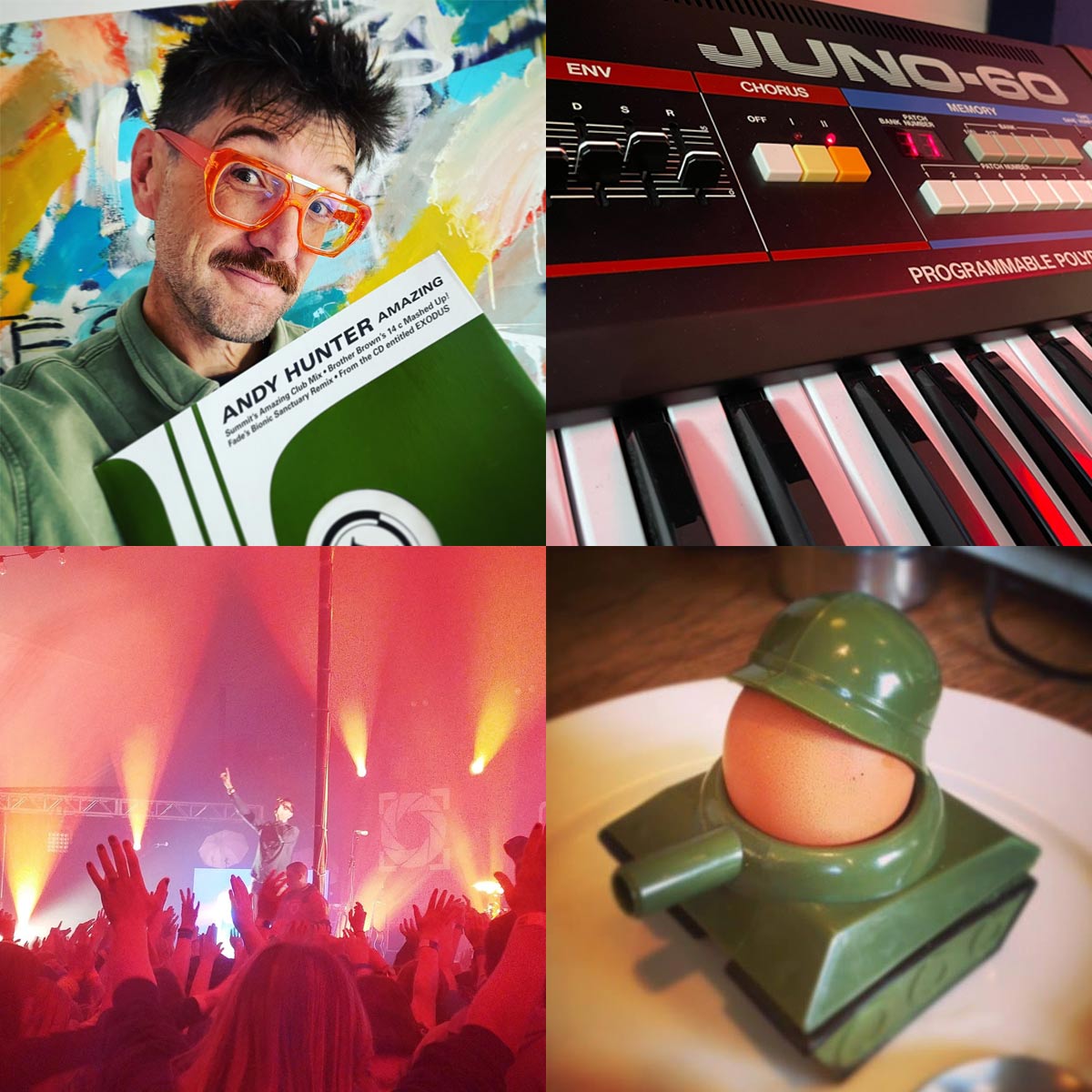 Getting started in music
Getting started in music
“I still remember my first gig in Bristol,” Andy says of the first time he played live. “It was at a place called the Mud Dock Café, a really cool kind of restaurant / lounge bar near Thekla. Back in the 90s I would just stroll round Bristol with my mixtapes, going in anywhere and saying ‘Can I get a gig?’.
“I actually went back a few years ago and it was still there. I also got into my first ever DJ magazine at the time – they came round and took some pictures. I was so stoked!”
Whilst he would go on to be known more for his DJing and dance music production, Andy actually started out as a live sound engineer and tech for touring bands.
“I got involved with this local band when I was a teenager,” Andy explains of his first forays into music. “I was probably about 13, just helping move gear around and that. I already knew I loved music – I played guitar as a kid, although admittedly I wasn’t the best haha.
“I just wanted to be around it, and for me that avenue turned out to be the more techy side. So I started learning all the gear, just basic stuff at first. I remember one particular gig where we ran everything through the PA – that was the first time I’d put the drums through the mixer, as before that it was just vocals and maybe a couple of guitars. To actually be at a venue where we could put everything through, that blew my mind.
“Then by chance I met a guy at a gig in Leicester who worked for a big production and PA company, and he said ‘why don’t you come along for an interview?’ So I ended up doing that, working as a roadie/techy – everything from fixing speakers and making up mic leads in the warehouse, to doing raves in the 90s, stacking up bands with massive speakers. And it was kind of a dream come true really because I’m thinking ‘Yeah, I’m in music’ which is where I always wanted to be, even just around it in some way. I still had dreams of being involved in studios someday, but my start was via the live route.”
After several years at a PA company, Andy’s next role took him down to the city of Bristol – joining an organisation set up to help young people get into music – just as the fledgling Jungle / Drum n Bass scene was really beginning to take off.
“That’s what allowed me to make the move into studios,” Andy says. “We were on early versions of Logic – Emagic back then – on the old grey Macs, just after the Atari phase.
“I started getting into programming with a Roland sampler, a 760 I think, alongside Logic for MIDI and control.
“I think next up was my first Roland JV-2080 which was amazing, I absolutely loved that.
“Naturally living in Bristol I started getting into Drum n Bass – which was kind of my first love musically – along with other types of dance music.
“I’d started DJing by then, as well as trying to produce my own tracks. I was in an outfit called Trip, myself and a chap called Martin King. Then I started getting into Trance and Techno, so I started to program that as well, in a group called Hydro. Live electronic stuff, a bit like Orbital I guess, hitting the festival scene. That was with old Yamaha mixers and Roland samplers, with Logic again as a kind of MIDI engine.”
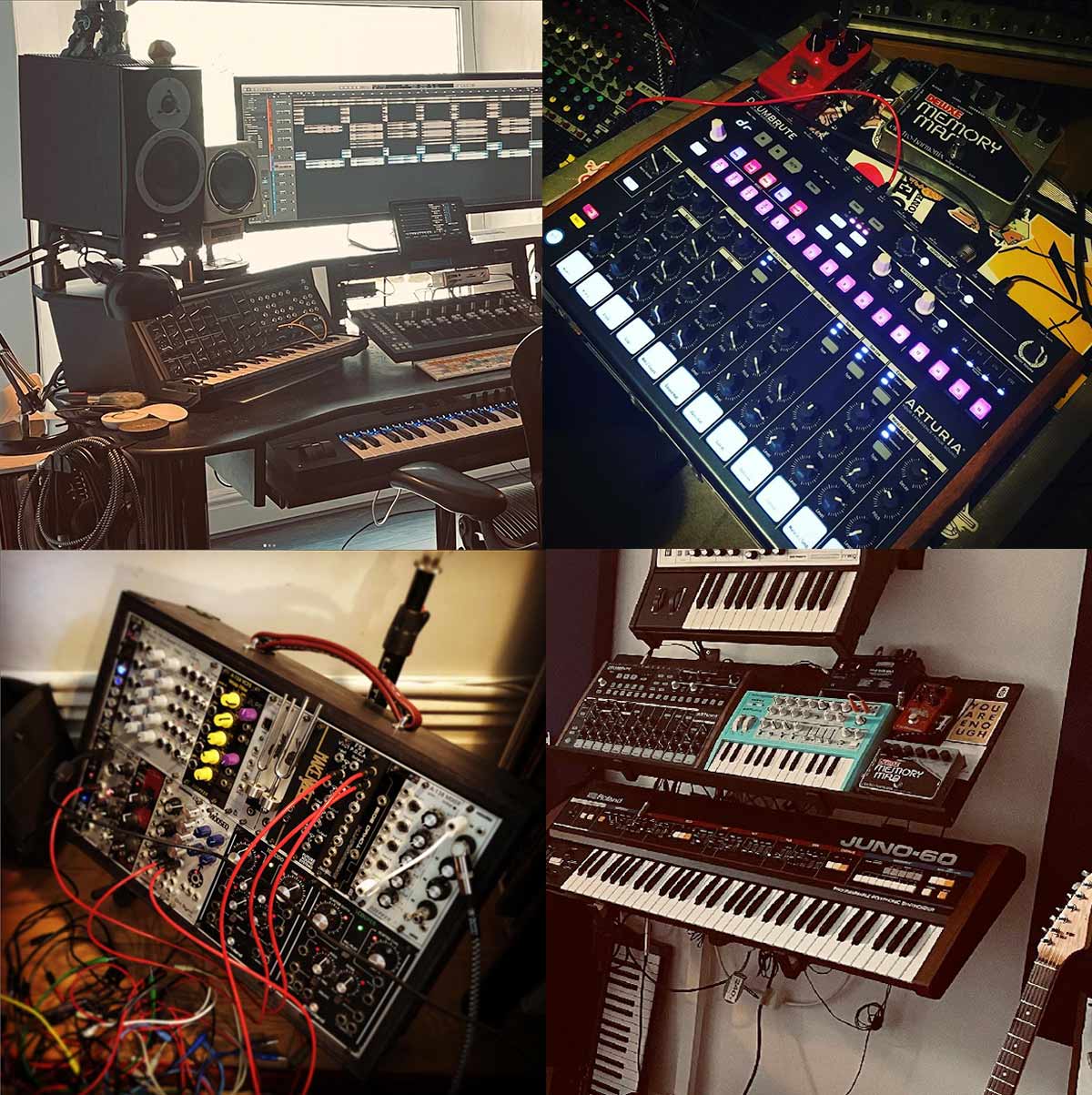
Releasing on EMI and The Matrix Soundtrack
As he began to take DJing more seriously, Andy was booked to play a gig in San Jose, California. This led to another chance meeting with a rep from EMI, and Andy ended up signing to the label.
“They were based in Nashville,” Andy continues. “I worked with a producer there on my first solo album called Exodus – I used to fly out monthly to produce the record in studios there which was really cool.
“And then the head of North America EMI started to hear my music, and it turned out he really liked it. So he started to find other outlets for it, which ended up being a bunch of films at the time, some pretty big Hollywood movies.”
As a result, Andy’s music began being licensed in both film and game sound tracks, with his track The Wonders of You chosen for the trailer to The Matrix Reloaded – the highly anticipated sequel to The Matrix – as well as the sound track for Need for Speed: Underground.
“Yeah that was fantastic to be involved with,” Andy reminisces. “That then led to The Italian Job remake… I mean I never really set out to create music specifically for use in film or computer games – my first album just seems to have naturally leant itself to that, and so it kept being licensed by Hollywood and gaming companies.”
“Eventually that sync market got really crowded out and things started to slow down, at least for smaller artists like myself.
“But yeah I was travelling the world, DJing, making albums, getting to do what I love. I signed with Network Records based in Vancouver which Tiësto was on.”
After spending a number of years on bigger record labels, Andy eventually decided to go independent – why the move to being an independent artist?
“It was really just because of what was being offered for an album,” Andy says contemplating the switch. “I just thought to myself, ‘I could own my own music for that’. And being as I’d built up a fanbase over the years, and what with social media, I just felt there wasn’t that much really a label could really help me with anymore, especially as you kind of end doing a lot of the promo and marketing yourself anyway.
“Whenever I do an album now I still print some CDs for the hardcores! That used to be a couple of thousand, but now I’m literally printing about 50 haha. So it’s been an interesting journey. Getting things licensed to some of the big Hollywood films, that really opened the door for independent film scoring for me, which is where I am now, working with Robbie Bronnimann who I’ve just finished another score with.
“Thanks to The Matrix and the Italian Job, we have smaller independent film companies getting in touch and asking if we’d be up for scoring their films.
“So it’s all good, I’m still an artist doing my own music as well. I also run something called Presence Project – it’s an app to do with the arts, poetry, reflection, mindfulness. I create a lot of ambient music for that, as well as videos, and work with spoken word artists and poets. And then that’s all housed in an app, which I try and do a monthly chapter for. I think overall you’ve just got to sort of find your own way – I mean I hit 50 this year and I’m still at it, which is quite nice as an independent artist!
“Looking back I’ve really enjoyed the journey, but you do have to be flexible at times. I was on the lists of composers for Microsoft Studios back in the day – doing music for adverts, a 5.1 thing to help launch their Windows Media Player, recording in Abbey Road. Anything that they wanted really, or for their clients like Nokia etc.
“So that was great while it lasted. But typical music industry – it’s about who you know – and one day my contact left Microsoft Studios, and a new guy comes in who’s got his own list of composers. So unfortunately I kind of lost the in-road there, it happens.
“It’s just that typical industry thing, you’ve got to keep networking. But it can also open unexpected doors, and you’ll find yourself in places you never thought you’d end up.”
 On touring the world as a DJ
On touring the world as a DJ
Along with his music being licensed for film and games, Andy has also toured the world as a DJ and played alongside some of the biggest names, including the aforementioned Tiësto. Does he have any standout moments?
“Yeah there’s quite a few,” he reflects. “Touring with Tiësto for sure. At the time he was like the number one DJ in the world. We did a tour of America, a bunch of big clubs. I went from playing small clubs in Bristol and Swansea to these mega clubs in the states! So for me that was crazy, definitely a real highlight.
“Playing at The Troubadour in LA, and at The Ryman in Nashville, I think I was the first DJ to play there.
“Also Parachute Festival in New Zealand. I was playing last on the main stage, and it was this beautiful moonlit night, clear sky full of stars, playing in this natural amphitheatre to about 8000 people. And it was just the best set ever, the whole place just kicked off.
“Yeah it’s incredible,” Andy says of playing his music to thousands of people. “I remember this one club in Chicago – we arrived in the parking lot underneath, and you literally got in a lift, went up, and suddenly it just opened up onto this mezzanine which housed the DJ booth.
“You walked out and there were three floors, with about 2000 people packed in. There was a dancefloor below with probably about 700 people, plus people up above as well.
“And the sound was just incredible, although I was so nervous! I’d literally just walked out of this lift, into the DJ booth, and then immediately I was on – no soundcheck or anything, no time to acclimatise. And I was on before Tiësto! This was still in the vinyl days, we’re talking early 2000s, and I remember picking up the needle and literally my hands were shaking, it was awful haha.
“And like you’re trying to be cool in front of all these people. Once you’re a couple of records in you relax though, you get into the groove, and then it’s just amazing. The place was absolutely thumping. I still don’t know how they stopped the vinyl from jumping with that amount of bass and subs.”

From one DJing legend to another, Andy also recalls the time he ended up playing alongside Grandmaster Flash, one of the founding founders of Hip Hop.
“This was through the Microsoft thing,” Andy says of mixing in front of the legendary DJ. “We did this DJ summit up in Seattle, to show off new PCs running music software like Ableton, and Microsoft called me in to be a kind of bridge between them and these other DJs.
“And I didn’t realise until I got there, but guys like Roger Sanchez were there, and Grandmaster Flash. We ended up doing a gig in Miami together that Microsoft put on, during the Winter Music Conference. And it was so bizarre because I was DJing Trance and Progressive House, and he was obviously Hip Hop and Turntablism. So to put the two of us together was kind of bizarre haha.
“I remember him and his son were literally stood right next to me, watching me mix. And what really shocked me was he was like ‘Oh man that’s such good mixing, how do you mix those songs over the top of one another? How do you go so smoothly from one to the other?’
“Because his style is obviously cutting – I mean he invented it! And scratching and all that mad business. But I guess because he’d been completely immersed in the Hip Hop world, to see a House DJ just mixing records on top of the other, and transitioning smoothly… And then chatting to him about keys, key relationships and all that. I think he actually hadn’t really been around that side of DJing. So that was all quite an honour you know, like wow!”
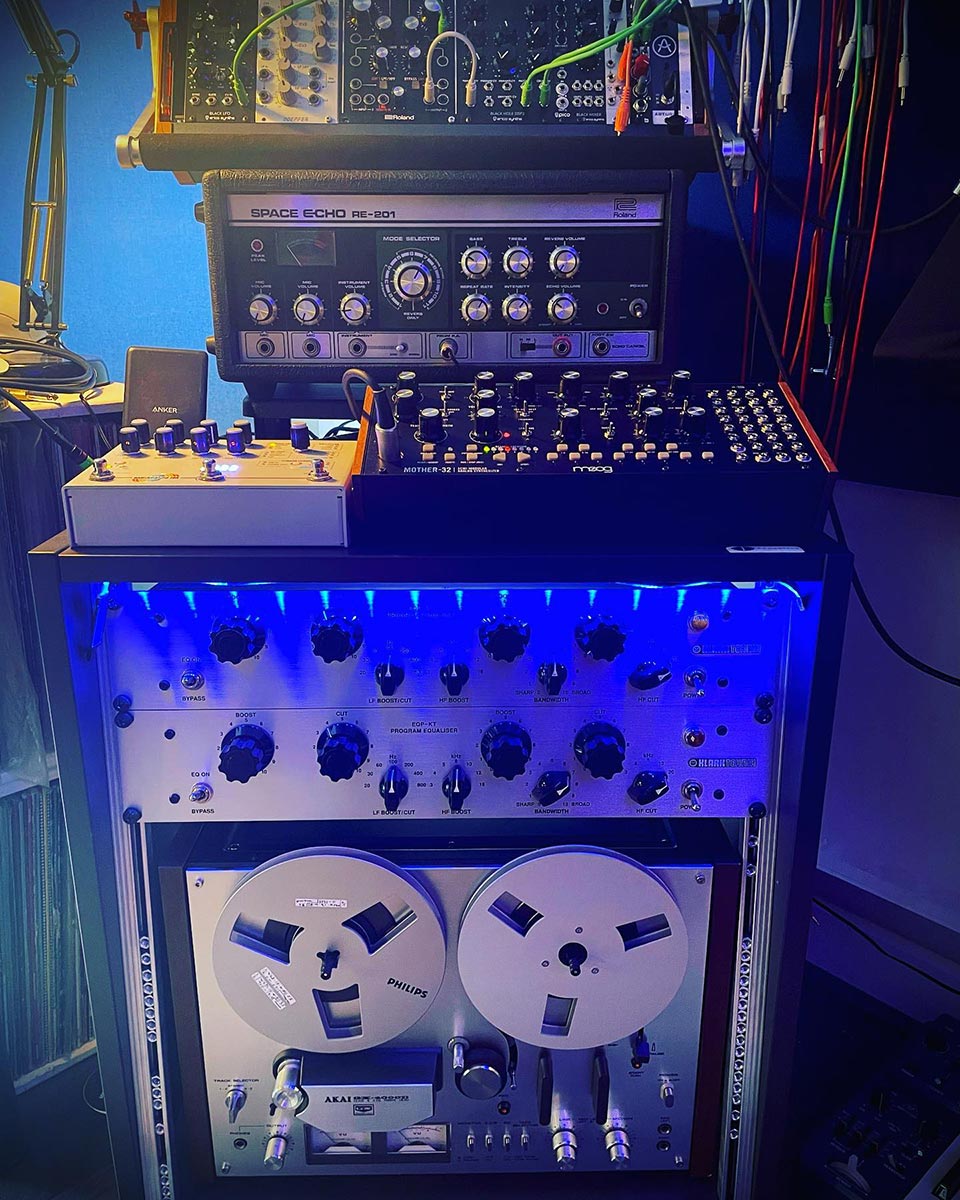 In the studio with Andy Hunter°
In the studio with Andy Hunter°
“I’m really into production, and I am a bit of a gearhead,” Andy tells us on the subject of his current studio setup. “I keep it more minimal these days, just what I need really, and things that excite me and help me creatively.
“In terms of inspiration, my faith is very important to me. So my relationship with God and how I live, that inspires a lot of my music. Just things I’m going through, or things I see happening in the world. I’m not that political, but there’s stuff that happens that really strikes home. Things that make you think ‘that’s so unjust’, and I think that definitely affects my music.
“Being that I film score and DJ, it’s not necessarily about using lyrics – you’re trying to use atmospheres, sounds that sum up a scene or create a certain mood.
“I’m really interested in crafting sounds that express a certain feeling – which is actually a bit like film scoring, where you’re responding to what’s on screen, and portraying that in the sounds and melodies you use. And I guess that’s really how I write – it’s often a reflection of what I’m going through in my own personal journey and faith journey, but also what I see going on around me.
“I’m still a proud user of Logic, with a Mac Studio. Hardware-wise I’ve got a UAD 4710D which I treated myself to, for running some my hardware synths through. I’ve got a Moog Sub Phatty, as well as my pride and joy the Juno 60, which I lusted after for years. It’s in mint condition, I got it for a steal as well!
“Then a Space Echo 201, and a Moog Mother that I feed through stuff. And then a bunch of FX, little micro racks full of FX. I really love the DSP Pico by Erika Synths, the reverb on that is amazing.
“And then for speakers I’ve got Dynaudios, which I’ve pretty much used throughout my career. I think my first set were the BM6 mkIIs, which I upgraded to the mkIIIs as soon as they came out. And then now I’ve got the Cores, after hearing the Core 7s.”
 On Dynaudio speakers
On Dynaudio speakers
The Core Series is Dynaudio’s current flagship range of studio monitors, designed for professional engineers working in music as well as film and post-production sound.
“I think I had Mackies originally, but I switched to Dynaudio after being in Nashville and hearing them,” Andy says of his choice of studio monitor. “The studio there was running everything through Dynaudios, so I switched just to sort of be compatible, and I’m glad I did.
“I was working on this film score recently and Robbie [Bronnimann] had just bought a pair of Core 7s, so I first heard them in his studio. He’d upgraded from the Airs, and he was saying they’re sort of like for like. I’d always liked the Airs too, but never got round to upgrading really.
“So I heard these and got in touch with Neil at Synthax UK, and he sent them down for me to try out in my space. And the difference was actually quite remarkable!
“I put them beside the BMIIIs, and a couple of things immediately hit me about them Cores. I mean I always loved my mkIIIs, but with the Cores – one the separation, they seemed a bit wider, and two, just more clarity in the mids and low end. Maybe it’s because they’re slightly deeper cabinets, they just seemed tighter in the bass to me. I’m still learning how to get a tighter lower end, it’s like a never-ending goal for me.
“So when I heard these I thought ‘oh these sound like they have more clarity down there, suddenly my mkIIIs sound a bit woolly by comparison’. So yeah, I just thought along with the improved separation, these do seem worth the upgrade.
“I mean since then I hadn’t really heard anything to tempt me away from my BMs – even the Airs which I know a lot of people love. Whereas once I heard these… I’d just bagged this film score, so I thought maybe it’s time. The BMs have done me proud for years, so I’m expecting the same from the Core 7s – I’m sure they’ll do me proud for years to come too.”
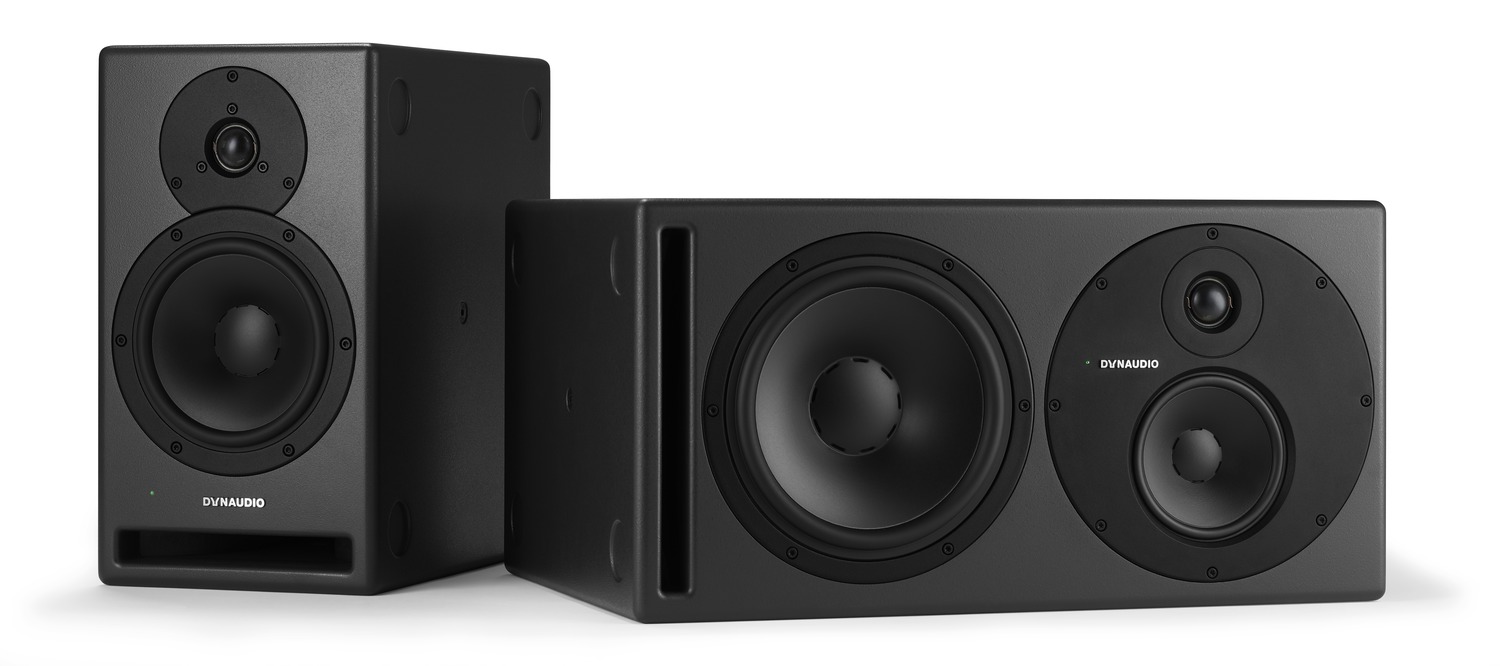
Our thanks to Andy Hunter. For more information about his music, check out his website at www.andyhunter.com.
The Presence Project app is available on the App Store and Google Play:
www.presenceproject.com
See the full range of Dynaudio Core Series Monitors
To find out where to buy Dynaudio studio monitors in the UK, see our list of Authorised UK Dealers.
![]()
Dynaudio is world-famous for making hand-crafted high-end loudspeakers for living rooms, home cinemas, cars and professional recording studios.
Since the beginning in 1977, the company has made iconic products rooted in a love of music and film – reproducing exactly what the artist intended. Nothing more, nothing less.






















